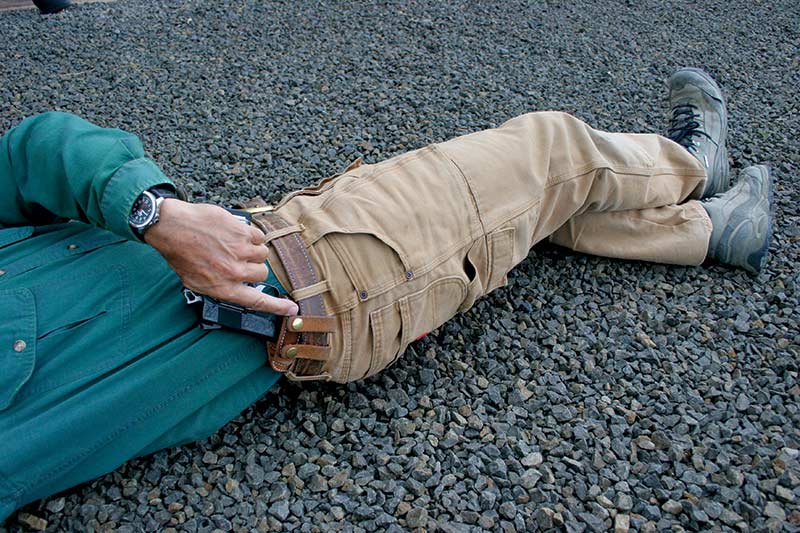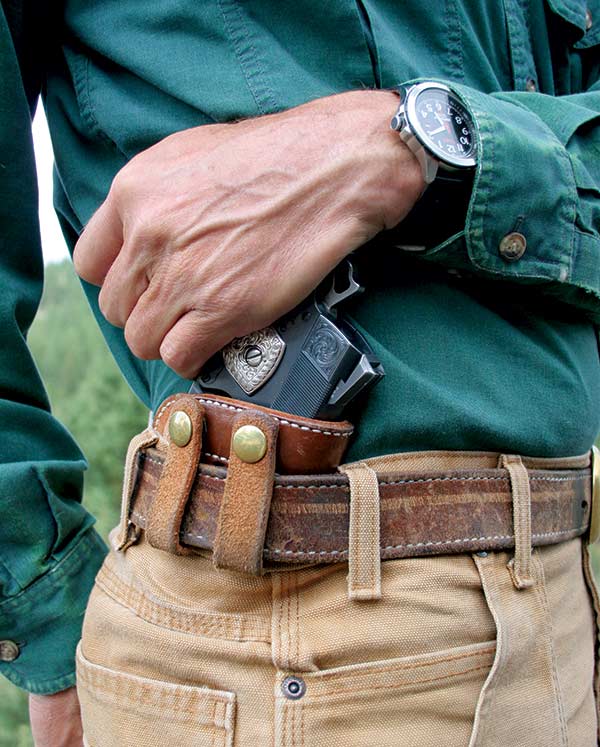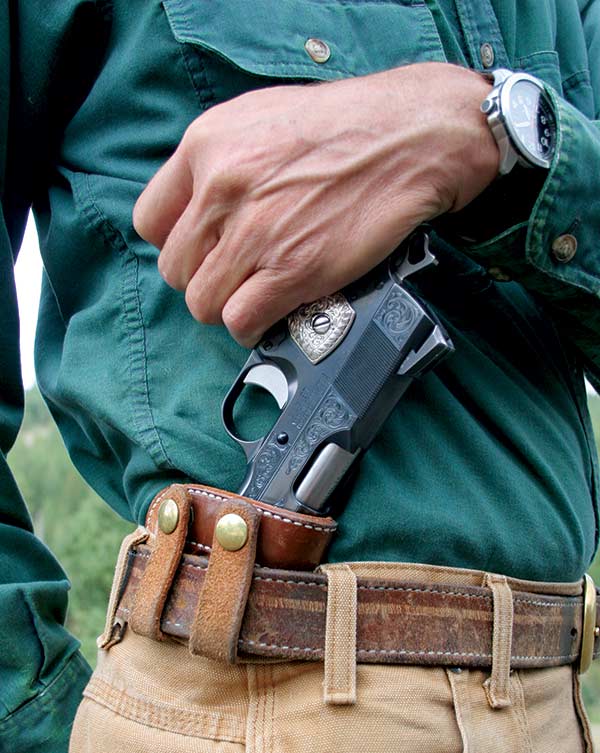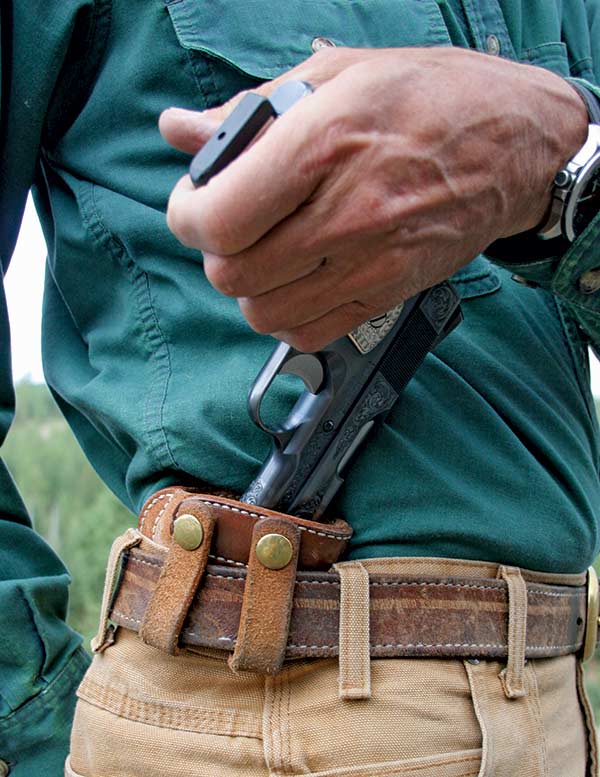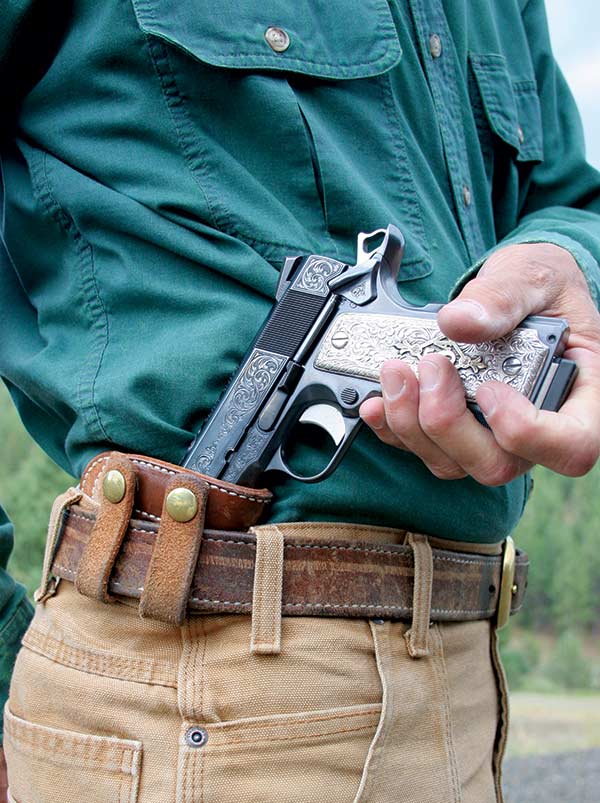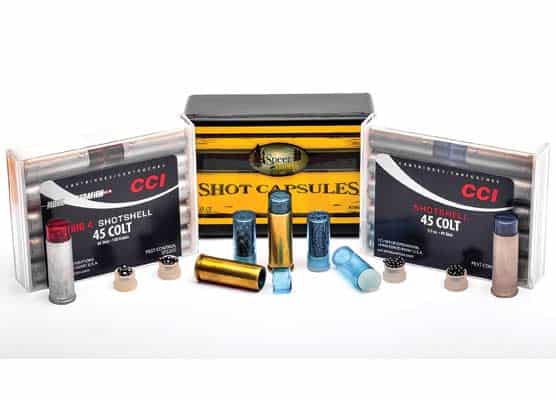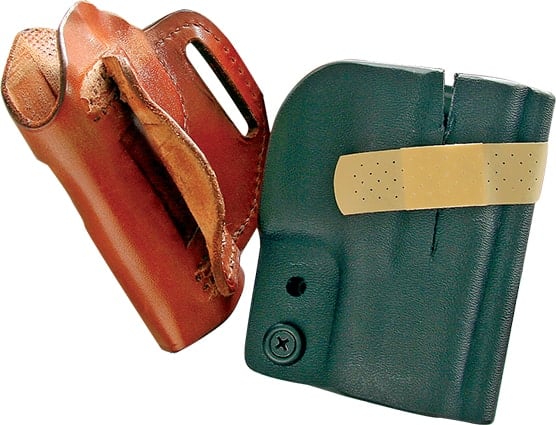Is The Weak Hand Willing?
'Different-Hand' Shooting Tips
Webster ’s defines weak as “lacking strength, a lacking of skill or proficiency.” Using this train of thought is our non-dominant shooting hand actually the weak hand as it’s often called, or is it better yet just lacking in skill or proficiency?
I’ve been shooting for about 40 years as a student of the craft, but also as a profession or in defense of others or myself. In my early years as a student I was often taught weak-handed shooting — but it was not taught in an effective manner.
For purposes of this article I chose to call my right hand the strong hand and my left hand will be called the weak hand, other hand or my personal favorite, the opposite hand. If you’re left-hand dominant and you’re reading this, just reverse the information like you have done for most of your life.
The left hand draw from a right side holster from the supine position. Note the muzzle arc does not cover the shooter while being drawn. Trigger finger is not on the trigger until the muzzle is clear of the shooter and downrange.
The Old Days
In the old days while shooting PPCtype courses you were required to shoot with the opposite hand, but the rules allowed that the strong hand could be used to support the opposite hand. Taking it from the range to a fight application it’s often bantered about that the weak hand could be used to shoot on a right hand corner in a confrontation, hence reducing your body’s exposure to incoming fire. Just so we get this correct then, the thought is on the approach, I shift the handgun to my left hand, support it with the right hand, then roll out to engage the potential threat. The concept I am reducing myself as a potential target is a good ideal — and I guess that could be true.
But based on my own experience, many people have a hard time hitting a threat with both hands being used, even with the strong hand being the primary gun hand while firing.
In tactical applications, it’s advisable to shoot with both eyes open. Yet some people can’t do this “left hand switch” without a good deal of winking, blinking and cross-dominant eye thing going on. The issue of an untrained proper trigger finger manipulation under the duress of a fight might be another fly in the ointment. Why complicate things unnecessarily anyway?
So as not to sound too negative I think you can train yourself up to this opposite hand task, but it would probably take a big investment in time and effort to become proficient. And I ask again, to what real end. Perhaps that same time would be better spent training in other arenas?
Why Do It?
But still, with the thought of personal defense in mind, I believe a reasonable amount of time should be spent to bring the opposite hand up to speed so you can handle emergency situations. Documentation shows many gunfights have participants injured in the fight and the use of the opposite — or simply onehanded firing — may be required.
The Miami FBI shooting of 1986 is a fair example. One agent fired a shotgun one handed and in the end terminated the fight with the use of his strong hand-only due to an injury sustained early in the fight. Another agent in the same fight at the back of the car brings another perspective into the fight, training, and practice modes. He also sustained an injury to his hand, which affected his ability to reload.
The injury to the hand brings another point into play as the agent had the will and, even though his hand was injured he still attempted to use the injured hand to help in the loading process even though his injury was massive. The point being that even with severe damage you can try to use the injured hand or arm to support firing or loading.
Simply put, fights do not always turn out to be what we think they will be.
I always teach and personally practice under the premise the injury will not allow me to use or support the firing hand whether strong or opposite. I think under the duress of the fight the injured party will make every attempt to use the injured limb to support to firing hand, unless the injury is so devastating the hand and arm cannot be used or even raised.
Older styles of practice had the shooter shoot one handed and yet bring the non-firing hand up and across the chest. In a fight if I think I can raise my arm to my chest I personally will train to shove the arm, hand, or even bloody stump up to help whatever hand is continuing
to fight and fire. Volumes of running blood or debris generated by the injury may require you to leave the injured limb out of the fight so as to not foul the weapon’s action. It’s happened.
How To Train It
I think the best way to learn to shoot with the opposite hand is to first look at and evaluate what you do with the right hand. This done I would try to mirror image what was done with the right. One caveat is to make sure your hand placement is high on the recoil shoulder of the pistol so the pistol is a straight extension of the forearm. This done, assure the trigger finger is properly placed so the trigger is centered in the middle of the first digit of the left hand trigger finger.
Often, if the pistol is brought up on target it either does or appears to have a slight cant. For instance, if 12 o’clock is straight up the pistol may appear to be canted to one o’clock. This is not some stupid rap gangster thing, but a slight top right lean. This is okay, and in fact probably natural, as your arms — while hanging free at the side — have a tendency to roll inboard anyways. By adding the pistol and then bringing the muzzle up on target this cant seems to be natural and correct in application.
I would always suggest that as much body weight be placed behind the pistol as possible since the auto pistol is recoil operated and recoiling guns work best with resistance provided by the shooter. You should keep this in mind regardless of whether you’re standing, prone or supine.
Left hand drawing stroke from right hand holster. Note hand placement and NO fingers on triggers and as well the arc of the drawing stroke not covering the shooter while drawn.
Drawing
Drawing with the opposite hand is mostly a function of body size, proper holsters and a willingness to win. The photo sequences show both standing versions and supine, and should answer most questions with the “picture worth a thousand words” concept being in play.
Loading And Clearing
Weak hand loading and malfunction issues are not pleasant but in reality are not nearly as complicated as you might think. Simply mirror what you would do in the strong hand only mode. Keep your finger off the trigger and the damn muzzle away from your personal body parts and pointed in the threat direction while doing these deeds.
Weak Hand?
I don’t think weak is the best word. Different maybe, but not weak. Is it going to be easy and is it a good idea? It probably won’t be easy, but then most things of value in life are not easy or easily achieved. Can it help to save my life? Acquisition of this potential lifesaving skill will require hard work, and it just may turn out someday be worth the effort. Practice safe.
Subscribe To American Handgunner

Get More Personal Defense Tips!
Sign up for the Personal Defense newsletter here:





